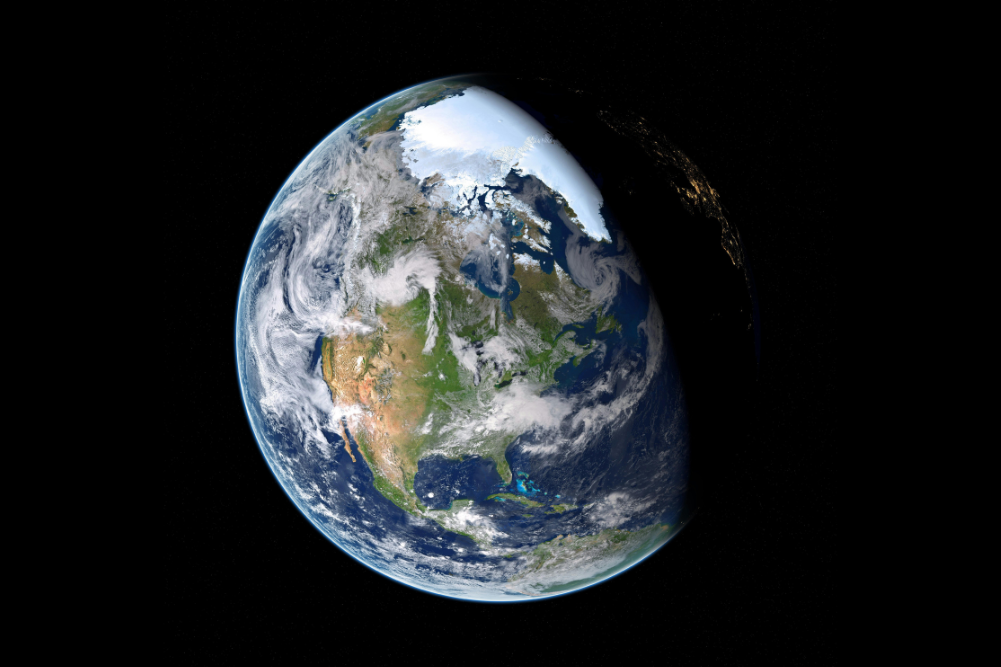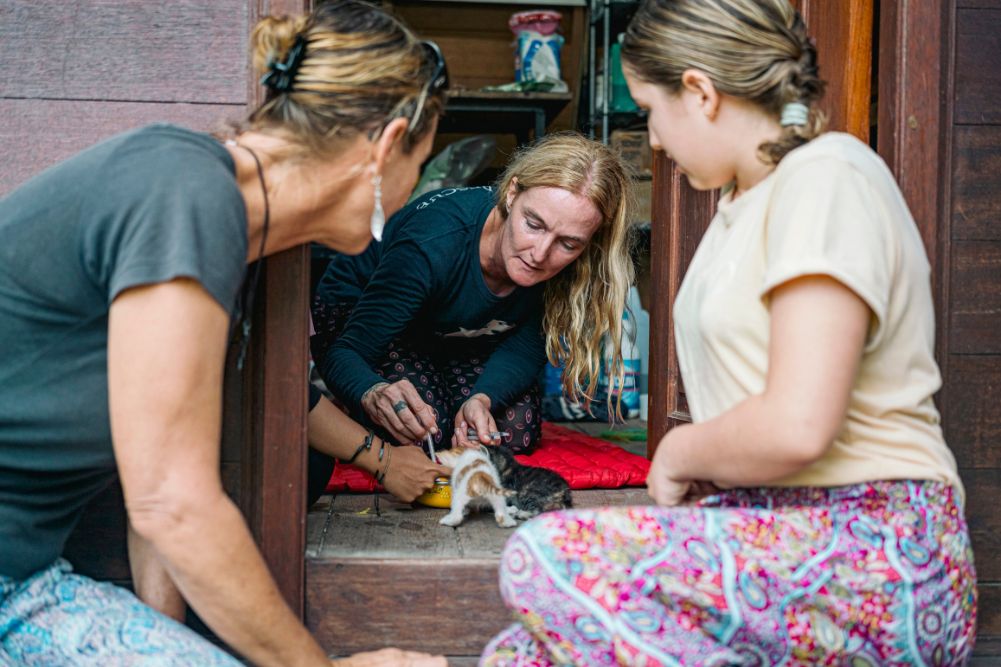Save the Great Barrier Reef
The Great Barrier Reef stretches 2600 kilometres up the Queensland coast, from Bundaberg in the south to beyond Cape York in the north. Declared a World Heritage Area in 1981, its protected zone spans a vast 344,000 square kilometres.
Coral reefs, which are giant colonies consisting of millions of carnivorous polyps, are also hotbeds of biodiversity. The Reef is home to 400 species of coral, 1500 fish species and 4000 different molluscs. Turtles, dolphins, whales, sea snakes and birds are important residents and visitors. Most unique is the dugong, a large and gentle marine mammal that feeds on seagrass beds.
As a tourist magnet, the Reef attracts visitors from across the world, who inject AU$6 billion (NZ$6.8 billion/US$5.4 billion) annually into the Australian economy and whose spending supports 60,000 jobs. Today, it’s in danger from several directions, most in connection with human activities. According to a commonwealth body known as the Australian Institute of Marine Science (AIMS), about half of its coral cover has been lost since 1986.
Reef under threat
Coral bleaching involves the breakdown of the symbiotic relationship between coral and algae species that serve as food, starting to occur when the summer water temperature exceeds one degree Celsius above average. As a result of water warming attributed to climate change, mass bleachings on the Reef are becoming increasingly common; they took place in 1998, 2002 and 2006. This increases susceptibility to disease, sometimes leading to coral death.
Unsustainable human activities are the cause of pollution affecting the Reef, in turn making it less resilient to climate change:
- Most agriculture on the coastal strip adjoining the Reef involves sugar cane or beef. Where soil is allowed to erode, it washes out to sea, causing sediment accumulation and turbidity (a reduction in water transparency from suspended particles). This in turn reduces the ability of coral to obtain solar energy.
- Fertilisers add nitrogen and phosphorus that create algal blooms, undermining the Reef’s health. However, recent modest improvements have been achieved.
- Pesticide pollution is another major issue. According to the World Wildlife Fund, the herbicide diuron is responsible for 80 per cent of the pesticide load reaching the Reef.
Other challenges facing the reef include:
- The crown-of-thorns starfish, which eats significant areas of coral. This is found naturally on the Great Barrier Reef, but since the 1960s its numbers have been shooting up due to increased chlorophyll found in algae that are boosted by nutrient runoff. Control of the starfish is ongoing but is only able to target localised areas.
- Fishing activities such as prawn trawling are permitted in about one-third of the marine park area. This can lead to bycatch of such species as birds, dolphins and turtles. Some species at the top of the marine food chain, such as sharks, are overfished.
- Natural storm damage from events such as Cyclone Yasi has damaged the Reef, too.
A fossil fuel bonanza
Australia has plans to treble the size of its coal production sector by the year 2020. The hub of this anticipated coal boom is the Galilee Basin near the Queensland town of Alpha, which may soon become the site of several vast coalmines. Most leases are owned by the Indian mining giants, Adani and GVK, although Australian mining billionaires Clive Palmer and Gina Rhinehart have significant interests, too.
In Queensland, coal-seam gas development has resulted in rural districts becoming industrialised as wells, pipelines and compressor stations take over the landscape, toxic water is stored in retention ponds, and volatile organic compound emissions contaminate the air. So far, across the state, 4500 wells have been drilled, with tens of thousands more on the drawing board.
To send these fossil fuels to key export markets, infrastructure will be needed. On the Queensland coast, construction is underway on a couple of huge export terminals and several more are in the pipeline. Dredging has been carried out to create channels and berthing facilities, requiring the dumping of millions of tonnes of dredging spoil that can contain high levels of heavy metals, pesticides and acid sulphate. Increased turbidity restricts the depth at which coral can grow and destroys or damages the seagrass meadows that are a vital food for turtles and dugongs.
A proposed six-fold increase in coal ship movements across the Reef by the end of the decade would multiply the associated risks, which include grounding on coral and oil spillages. In 2010, both of these occurred during the same incident, when the bulk coal carrier Shen Neng 1 ran aground, leaving a 3km-long scar and causing damage to 0.4 square kilometres of reef. The subsequent oil leak was dispersed using the toxic dispersant, Corexit.
Port developments and proposals in the Reef’s area include:
- Abbott Point, an existing coal port about 25km north of Bowen. To export coal from the Galilee Basin mines, two new terminals are planned by GVK and Aurizon. A decision on the project, which would involve dredging and dumping 3 million tonnes within the World Heritage Area, was delayed by the former Labor government.
- Wiggins Island near Gladstone, which is the site of Gladstone’s third coal export port. Construction is underway, with a total of 6.3 million tonnes of sea floor to be dredged and dumped onshore.
- Dudgeon Point near Mackay, where two coal export terminals proposed by the North Queensland Bulk Ports Corporation are habitat for the flatback turtle.
- The Fitzroy Delta near Rockhampton, the most environmentally significant estuary on the east coast of Australia. Two proposed coal ports, at Raglan Creek and Balaclava Island, would put environmentally sensitive areas in danger. In an encouraging move, in September 2013 Federal Environment Minister Greg Hunt signalled that the area would be protected.
- The Port of Townsville is subject to plans to expand to double its previous size for increased cargo handling. This would involve dredging through a dugong protection zone just kilometres from Magnetic Island. Under the plan, 5.6 million tonnes of dredging spoil would be disposed of in the World Heritage Area.
- The Cairns area is the subject of a proposal to dredge a channel at Trinity Inlet, a biodiverse estuarine area close to the Reef, to allow large cruise liners to enter.
Dark side of the boom
At Curtis Island near Gladstone, which adjoins the Marine Park, three vast coal-seam gas processing plants and export terminals are under construction. A fourth plant was recently rubber-stamped by the Queensland Government.
Roughly a quarter of the pristine island was declared an industrial zone and bulldozed flat, including the mangroves. In the largest project of its kind ever undertaken in Australia, 15 million tonnes of sea bed was dredged, of which about 4.4 million was dumped in the World Heritage Area, at the East Banks Spoil Ground.
Local commercial fishing businesses have ceased their activities due to the prevalence of fish diseases which, in the estimation of aquatic disease specialist, Dr Matt Landos, are most likely caused by the dredging. There have been major drops in the inshore dugong and dolphin populations, and testing of dead turtles has revealed elevated levels of copper, arsenic, aluminium and other heavy metals.
UNESCO’s response
UNESCO is the international body that administers World Heritage Areas. Recently, it has been sending clear signals that it is unhappy with Australia’s management of the Reef.
In June 2012, a UNESCO report expressed “extreme concern” at the rapid port development along the Reef coast and warned against new developments with the capacity to affect the Reef before an assessment is completed. The Gladstone gas developments were singled out for special attention. Australia was given eight months to demonstrate substantial progress in its management of the Reef.
At a meeting one year later in Cambodia, UNESCO decided not to immediately classify the Reef as World Heritage in Danger, holding off a determination until 2014.
Political manoeuvres
With the election of the conservative Abbott Government in September 2013, there has been a marked policy shift that favours the interests of the mining sector. Abbott has promised to “cut green tape” and wants to set up a “one-stop shop” for development approvals that is seen by the Greens as a fast-track for large and environmentally damaging projects.
Part of this plan involves handing approval powers for key environmental decisions back to the states. Queensland Premier Campbell Newman wasted no time in asking Abbott for approval powers, and negotiations on a handover have begun.
If ultimate responsibility for our national treasures had rested with state governments, Fraser Island would have been sand-mined in 1976 and the Franklin in Tasmania would have been dammed in 1983.
Newman is strongly pro-mining and pro-development, having already watered down environmental protection rules that relate to the Reef, and fast-tracked coal ports. With the Liberal National Party holding 78 out of 89 seats in the Queensland lower house, and with the state having abolished its upper house, there is no political avenue for challenging the government’s agenda.
Goliath, meet David
On one side of the Reef debate are Australia’s largely foreign-owned mining industry and state and federal governments, sometimes abetted by a lack of media scrutiny into what is really happening there.
Opposition to environmentally damaging development in close proximity to the Reef is broader and more grassroots. Critics include UNESCO, prominent figures in the Australian scientific community, Greenpeace, Fight for the Reef (a partnership between the World Wildlife Fund and the Australian Marine Conservation Society), the progressive lobby group GetUp!, the tourism lobby and community groups.
In August, 2013, either 1000 or 3500 people, depending on which source you believe, marched for the Reef in Brisbane. Public opinion seems to be on their side: a poll held in the Capricornia electorate centred on Rockhampton found that three-quarters of those surveyed supported the banning of dredging spoil being dumped on the Reef.
Meanwhile, three American NGOs have sued the US Government-run Export-Import Bank over US$5 billion (AU$5.3 billion/NZ$6 billion) of loans to the Curtis Island gas facilities, on the basis of climate impacts and damage to marine ecosystems.
Say no to fossil fuels
In addition to lobbying government, the grassroots climate action group 350.org advocates “challenging power with power” and non-violent direct action is a likelihood down the track.
For years, campaigns targeting the proposed investors in large destructive projects have been remarkably successful. 350.org is spearheading a global movement of investment away from the fossil fuel sector and this has rapidly snowballed. Specially targeted are universities, local government, faith-based groups, banks and super funds.
What is at stake here includes beautiful natural places such as the Bimblebox Nature Refuge, the Great Barrier Reef itself and the world’s climate into the bargain.
Take action
To help protect the Great Barrier Reef you can:
- Sign up to Fight for the Reef’s email list.
- Sign up to GetUp!’s email list. Ongoing campaigns by Australia’s most powerful lobby group include actions to protect the Reef.
- Participate in 350.org’s divestment campaign and lobby local institutions to move their investments away from fossil fuels.
- Move your superannuation to a fund that excludes coal and coal-seam gas mining. At present, the only one is Australian Ethical Super, a fund that is accessible to both Australians and New Zealanders. If your super is already in another ethically screened fund, suggest that they extend their criteria to include these forms of mining.
- Switch banks. All the big four Australian banks (ANZ, Westpac, Commonwealth and NAB) are involved in substantial loans to East Coast coal and gas export projects. Those with policies not to invest in the fossil fuel sector include bankmecu and Bendigo Bank.
Resources
Great Barrier Reef Marine Park Authority, gbrmpa.gov.au
Fight for the Reef, fightforthereef.org.au
Save Curtis Island, savecurtisisland.com
Fitzroy Delta protection, protectkeppelbay.org
Communities Protecting our Region, dudgeonpoint.org
Australia divestment campaign, 350.org.au/go-fossil-free
New Zealand divestment campaign, 350.org.nz/gofossilfree
Australian bank policies on fossil fuel investments, marketforces.org.au/banks/compare.html
Martin Oliver is a writer and researcher based in Lismore, northern NSW, Australia.







